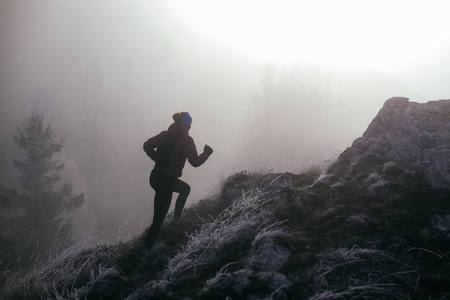1. Understanding the Pacific Northwest Climate
The Pacific Northwest is renowned for its lush forests, dramatic coastlines, and most notably, its relentless rainfall. Stretching from northern California through Oregon and Washington to British Columbia, this region experiences some of the highest annual rainfall totals in the continental United States. Cities like Seattle and Portland are famous for their drizzly days, but it’s the persistent mist and frequent showers that truly define the area’s climate. On average, parts of western Washington receive over 80 inches of rain each year, with precipitation peaking between October and March. This constant moisture not only nurtures breathtaking greenery but also presents unique challenges for outdoor survival. Persistent dampness means that staying dry becomes a top priority—whether you’re hiking, camping, or facing an unexpected night outdoors. Understanding how these wet conditions influence everything from temperature regulation to shelter durability is essential for anyone hoping to thrive in the Pacific Northwest wilderness.
Essential Waterproof Materials and Gear
When it comes to building a shelter that stands up to the Pacific Northwest’s notorious downpours, choosing the right waterproof materials is crucial. Whether you’re an outdoor enthusiast or preparing for emergencies, understanding which gear works best can make all the difference in your comfort and safety. Below, we’ve outlined some of the most trusted and easily accessible options available in the U.S., so you can confidently face even the rainiest days.
Top Waterproof Materials for Shelter Construction
| Material | Description | Pros | Cons | Availability |
|---|---|---|---|---|
| Tarp (Polyethylene or Canvas) | Heavy-duty waterproof sheets, widely used for quick shelters. | Affordable, lightweight, versatile, easy to find at hardware stores. | Can tear under stress; needs secure anchoring in wind. | Home improvement stores, outdoor retailers |
| Treated Fabrics (Ripstop Nylon/Polyester) | Specially coated fabrics designed for tents and rain flies. | Durable, highly water-resistant, lightweight, packs small. | More expensive than basic tarps; may require seam sealing. | Outdoor gear shops, camping supply stores |
| Plastic Sheeting (Visqueen) | Flexible plastic film used for emergency shelters or ground covers. | Very waterproof, inexpensive, multi-purpose. | Tears easily; not breathable—can cause condensation inside shelters. | Hardware stores, big box retailers |
| Synthetic Insulation (Closed-cell Foam Mats) | Pads that provide insulation and a moisture barrier under sleeping areas. | Keeps you dry from ground moisture, adds comfort and warmth. | Bulky compared to bare ground; not for overhead use. | Sporting goods stores, online retailers |
| Duct Tape & Seam Sealer | Accessories to reinforce seams and patch leaks quickly. | Easily fixes tears or seals weak points; lightweight and portable. | Temporary fix; not a full replacement for quality material. | Available almost everywhere |
Cultural Tips: Choosing What Works in the Pacific Northwest
The Pacific Northwest is known for its persistent drizzle and sudden downpours, making layered protection essential. Many locals swear by combining a sturdy tarp as an outer shell with treated fabrics underneath for added dryness and warmth. Remember that American outdoor culture values both preparedness and eco-friendliness—whenever possible, opt for reusable materials or repurpose old tarps rather than relying on single-use plastics. Don’t forget accessories like paracord or bungee cords to secure your shelter tightly against wind-driven rain.
Your Must-Have Rainy Day Shelter Kit:
- A large polyethylene tarp (at least 8×10 ft)
- Treated nylon tent fly or poncho liner
- Plastic sheeting for ground cover
- Duct tape and seam sealer
- Paracord or adjustable straps for tying down corners
A Practical Note:
If you’re shopping locally in Washington or Oregon, check out outdoor chains like REI or Fred Meyer—they often carry regionally recommended gear. And remember: investing in reliable waterproof materials now will save you countless soggy nights in the future!

3. Choosing the Right Shelter Location
Finding the perfect spot to set up your waterproof shelter is crucial for survival in the rain-soaked wilderness of the Pacific Northwest. This region’s dense forests and perpetually damp terrain can make it tricky, but with some careful consideration, you can avoid common pitfalls and stay dry and safe.
Scout for High Ground
Always look for elevated areas when selecting your shelter site. Low-lying spots may seem inviting, but they’re prone to pooling water and flash flooding after heavy rain. Choose a gentle slope or a small rise—just be sure it’s not so steep that you’ll slide down in your sleep! In forested landscapes, fallen logs or mossy knolls can offer natural elevation.
Avoid Hazards
Steer clear of sites directly under large, old trees with heavy limbs, as branches can break off during storms (locals call these “widowmakers” for a reason). Similarly, avoid setting up near riverbanks or streams; they can swell rapidly after rainfall. Watch for signs of animal activity too, like game trails or scat, and pick a spot away from wildlife corridors to minimize unwanted encounters.
Check for Drainage
Good drainage is a must in the Pacific Northwest. Before settling on a location, check the ground by pressing your hand into the soil—if it feels spongy or saturated, keep looking. A patch of fir needles or thick moss often means better drainage than bare mud or clay. If possible, dig a shallow trench around your shelter perimeter to channel away any runoff.
Consider Wind and Weather Patterns
Position your shelter with its back to the prevailing wind (often coming from the southwest) to block out gusts and driving rain. In dense forests, use natural windbreaks like thickets or boulders to shield your setup even further.
Think About Comfort and Access
Lastly, don’t forget about personal comfort. Look for a flat area big enough to stretch out and move around without rolling onto roots or rocks. Make sure you’re close enough to fresh water—but not so close that rising levels could threaten your camp. With these tips in mind, you’ll find a safe haven amidst the misty woods of the Pacific Northwest.
4. Building Techniques for Rain-Resistant Shelters
Constructing a waterproof shelter in the Pacific Northwest isn’t just about comfort—it’s about survival. The region’s relentless rain demands that every camper, hiker, or outdoor enthusiast knows how to build a reliable refuge. Whether you’re using what nature provides or materials from your pack, the right steps make all the difference. Here’s a step-by-step guide to help you craft a rain-resistant shelter with both natural and synthetic resources.
Step 1: Choose the Right Location
Selecting where to set up is crucial. Look for slightly elevated ground to avoid pooling water. Steer clear of dry creek beds and low spots—these can quickly flood during heavy rains.
Step 2: Gather Materials
| Natural Resources | Synthetic Resources |
|---|---|
| Large leaves (like skunk cabbage) | Tarp or rain fly |
| Boughs from evergreen trees (cedar, fir) | Paracord or rope |
| Sturdy branches for framework | Duct tape or clips |
| Moss for insulation | Plastic sheeting or trash bags |
Step 3: Build the Framework
Create a stable structure by leaning long branches against a central ridgepole, forming an A-frame or lean-to shape. Secure the frame with rope, vines, or even strips of bark if you don’t have paracord.
Pro Tip:
If using a tarp, stretch it tightly over your frame and anchor it securely at each corner to keep water from pooling on top.
Step 4: Layer for Waterproofing
For natural shelters, layer evergreen boughs thickly on your frame, starting from the bottom and overlapping upward like shingles. This directs rain away from your sleeping area. If available, add large leaves and moss for extra insulation and waterproofing. For synthetic shelters, double up tarps or use plastic sheeting beneath as a ground barrier.
Step 5: Secure and Inspect
Use rocks, logs, or stakes to weigh down edges and secure everything in place. Crawl inside and check for gaps where water could seep through—reinforce these areas as needed.
Quick Reference Table: Shelter Types & Key Features
| Shelter Type | Main Benefit | Best Materials |
|---|---|---|
| A-frame Natural Shelter | Excellent runoff, easy to build | Boughs, leaves, branches |
| Tarp Lean-To | Fast setup, reusable materials | Tarp, paracord, stakes |
| Bivy Sack Shelter | Minimal space & weight needed | Bivy sack, plastic sheet |
By following these steps and adapting to what you have on hand, you’ll stay dry and safe—even when the Pacific Northwest turns up the rain.
5. Staying Warm and Dry Inside Your Shelter
Mastering the Art of Comfort in Damp Climates
The Pacific Northwest is famous for its relentless rain, misty mornings, and chilly nights. Even with a well-built waterproof shelter, staying warm and dry inside can be a real challenge. Managing condensation, dampness, and cold isn’t just about comfort—it’s crucial for your health and safety. Here are some practical tips and clever hacks to help you thrive, not just survive, in wet weather conditions.
Condensation: The Invisible Enemy
Condensation happens when warm air from your body meets the cool surfaces of your shelter. This moisture can make everything feel soggy and uncomfortable. To combat this, always ventilate your shelter—even if it feels counterintuitive during a downpour. Crack open a vent or unzip a small section of your tent door (use a rainfly or tarp overhang for protection). If you’re building from natural materials, leave small gaps near the roofline to let humid air escape. Additionally, avoid cooking inside; boiling water or food adds extra moisture to the air.
Dampness: Keeping Gear and Bedding Dry
Once things get wet in the Pacific Northwest, it can be tough to dry them out. Prioritize keeping your sleeping bag, clothes, and socks as dry as possible—stash them in waterproof stuff sacks or trash bags when not in use. Designate a “wet zone” at the entrance for muddy boots and soaked gear. Hang up damp clothing on paracord lines under your tarp or near your heat source (but never too close to open flames). Consider packing quick-dry fabrics or wool items, which insulate even when damp.
Beating the Cold: Layering and Heat Retention Tricks
Layering is key to warmth—start with moisture-wicking base layers to pull sweat away from your skin, add insulating mid-layers like fleece or wool, then top off with a waterproof outer shell. At night, use an insulated sleeping pad to block the cold ground; pine boughs or thick ferns work in a pinch if you’re relying on natural materials. For an extra boost, fill a water bottle with hot (not boiling) water before bed and slip it into your sleeping bag.
Bonus Hack: Emergency Warmth
If you get chilled, do light exercises such as seated leg lifts or arm circles inside your shelter to generate body heat safely. Chemical hand warmers are lightweight lifesavers—tuck them into pockets or gloves for quick warmth.
Safety First: Avoid Carbon Monoxide Risks
While it might be tempting to bring a heat source inside, never use gas stoves or open flames in enclosed spaces due to carbon monoxide risk. Stick with safe alternatives like battery-powered heaters designed for camping (and still ensure ventilation).
Your Cozy Refuge Awaits
With smart planning and a few tried-and-true techniques, you can transform even the soggiest PNW night into a cozy retreat. Embrace these habits to keep yourself warm, dry, and ready for whatever tomorrow’s forecast brings.
6. Safety and Leave-No-Trace Ethics
When building waterproof shelters in the Pacific Northwest, your adventure goes beyond just keeping dry—it’s also about caring for the land and wildlife around you. Practicing “Leave No Trace” isn’t just a catchy phrase; it’s a cultural expectation here, woven into outdoor activities across the region. Always set up your shelter at least 200 feet from lakes, streams, and rivers to prevent erosion and protect sensitive habitats. Avoid disturbing native plants or trampling fragile mosses and ferns, which are iconic to the area but easily damaged. If you need to use natural materials like branches or leaves, gather only what’s already fallen—never cut live vegetation. Be mindful of local wildlife: keep food securely stored to avoid attracting curious raccoons or bears, and never approach or feed animals, no matter how cute they seem. After your stay, dismantle your shelter completely and scatter any gathered debris so that the site looks untouched. Packing out all trash—including small items like wrappers or twist ties—is non-negotiable in the Pacific Northwest’s outdoor culture. By respecting these sustainable practices and showing care for both the environment and its inhabitants, you’ll help ensure these rain-soaked wild places remain beautiful and welcoming for everyone who seeks shelter beneath their towering trees.


